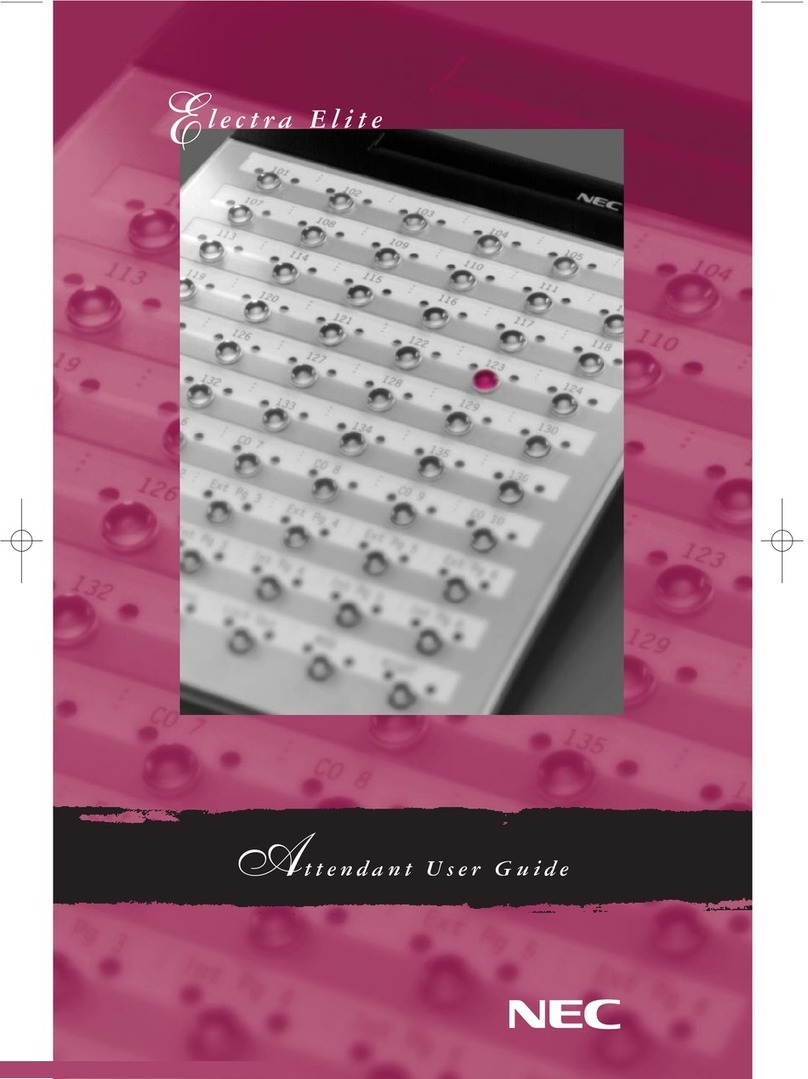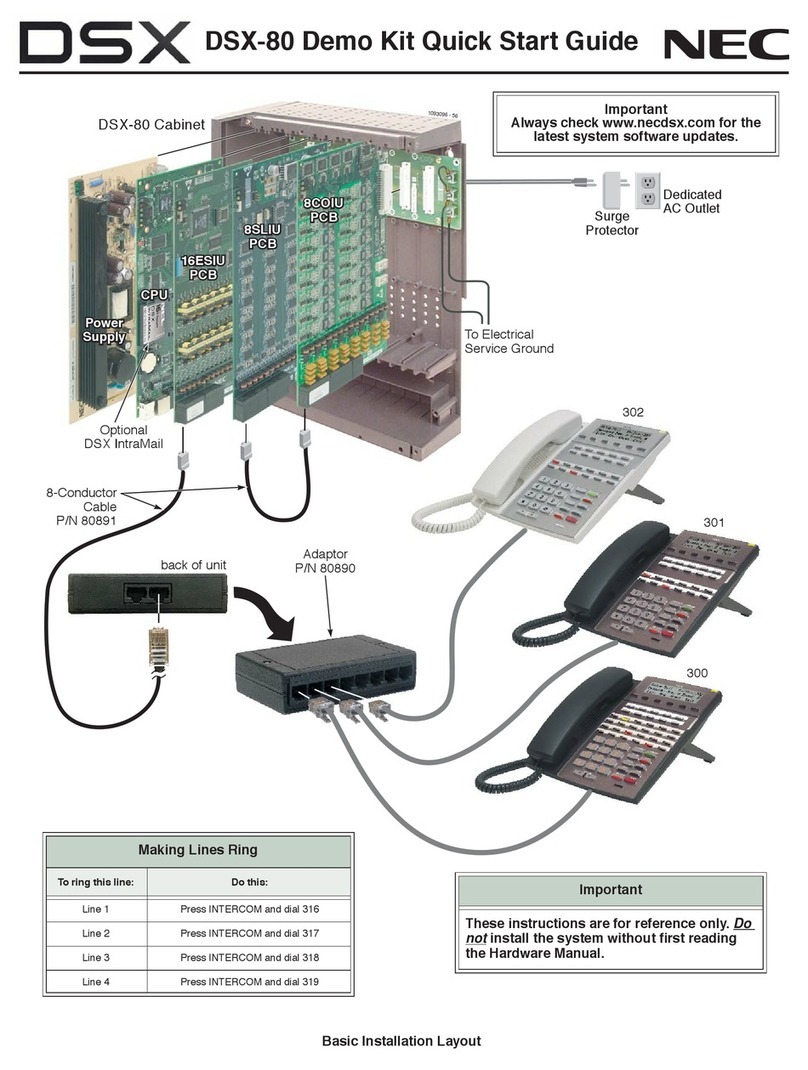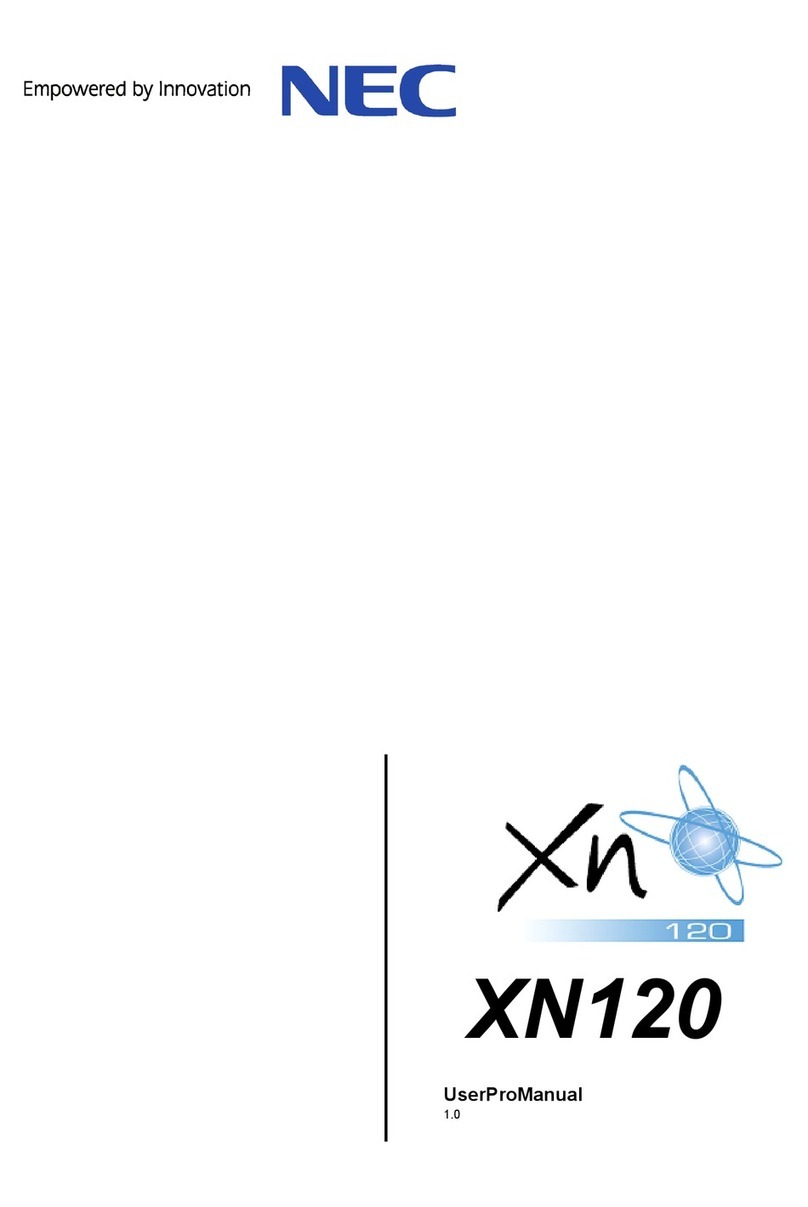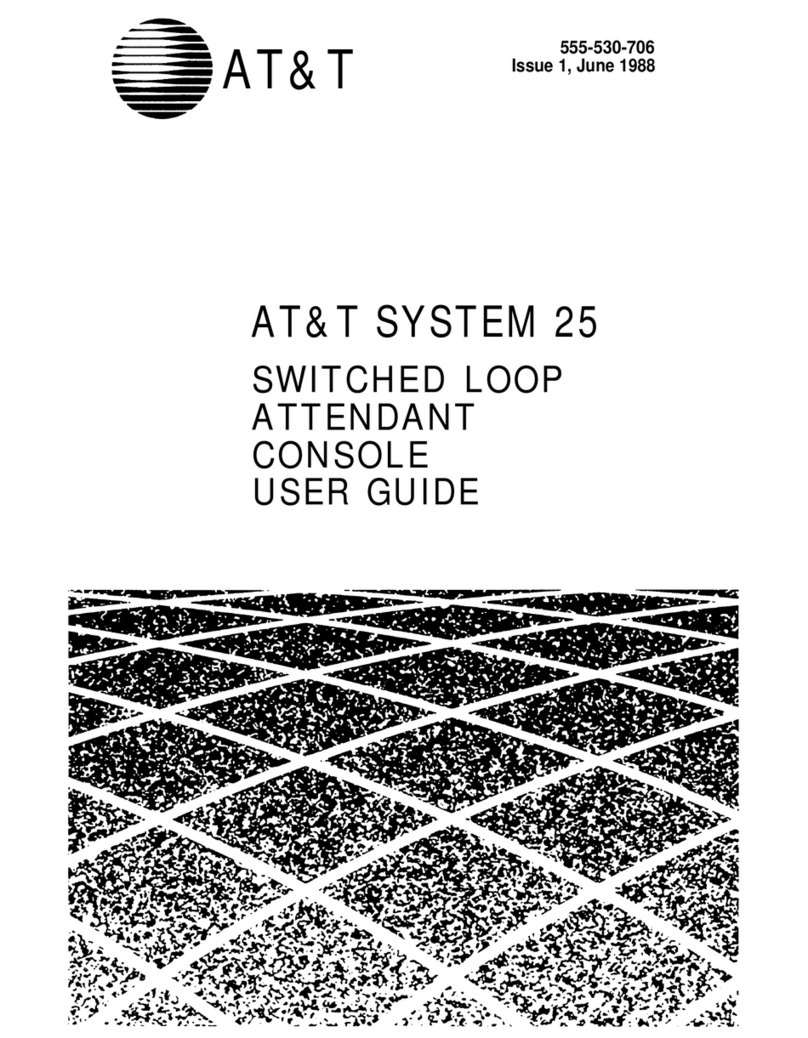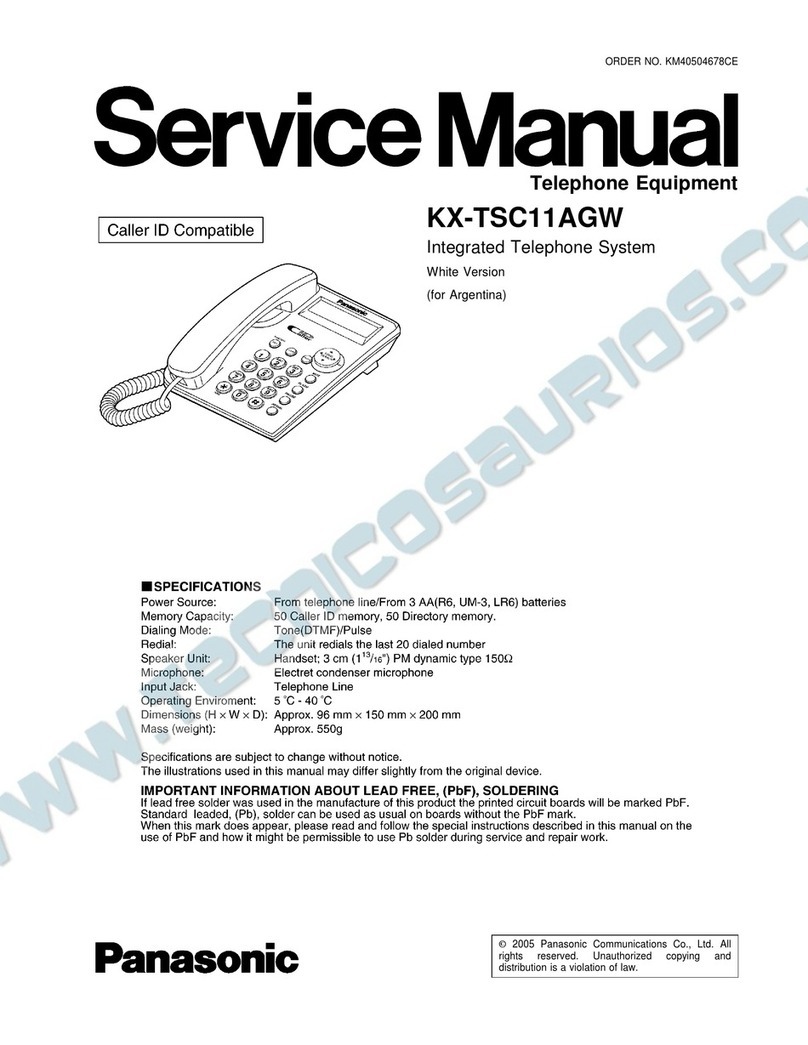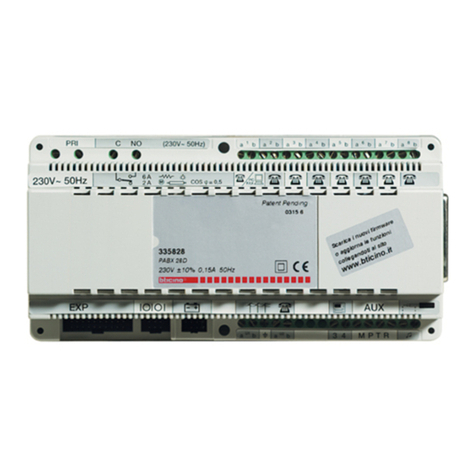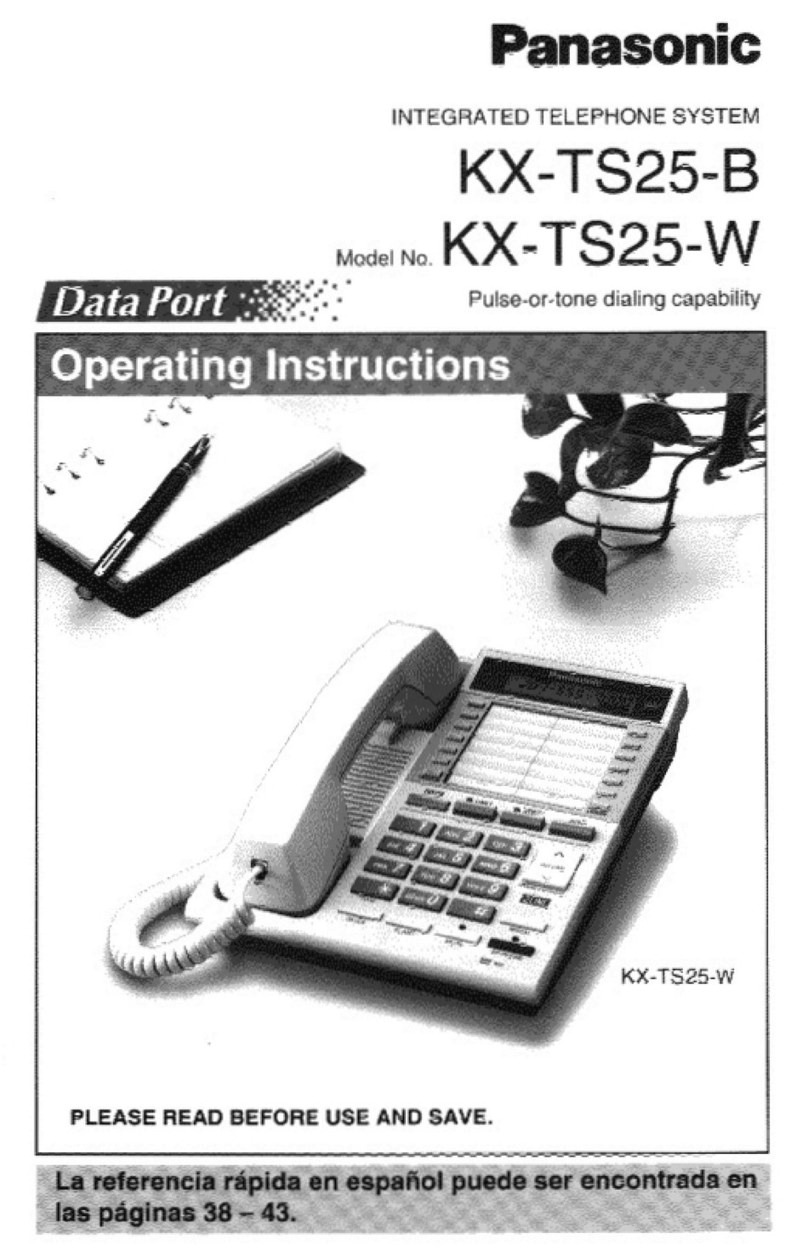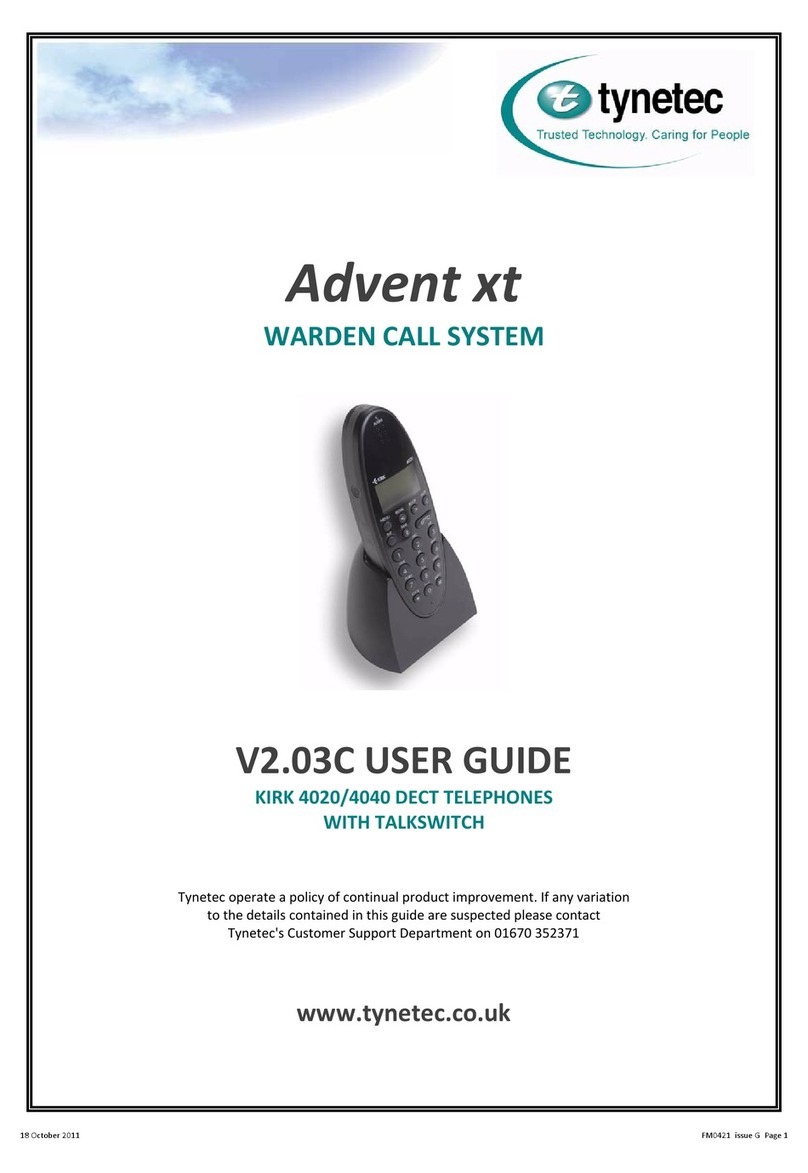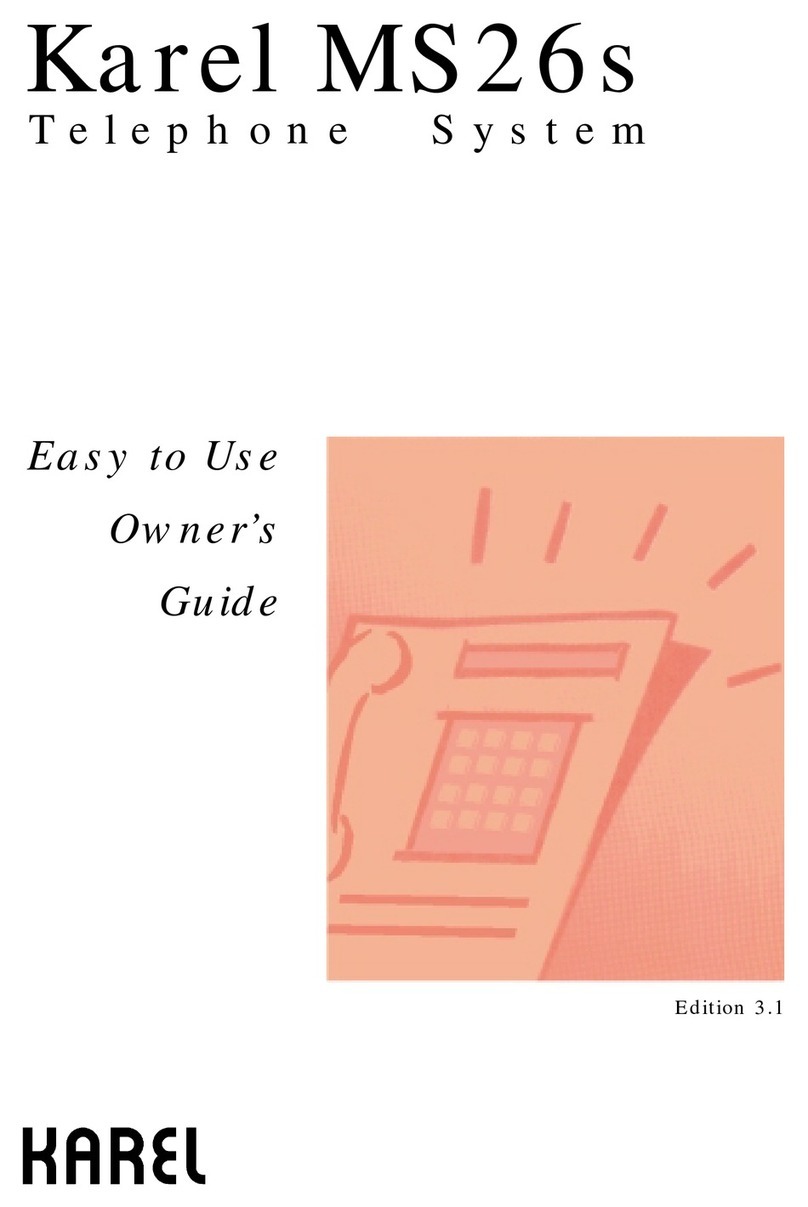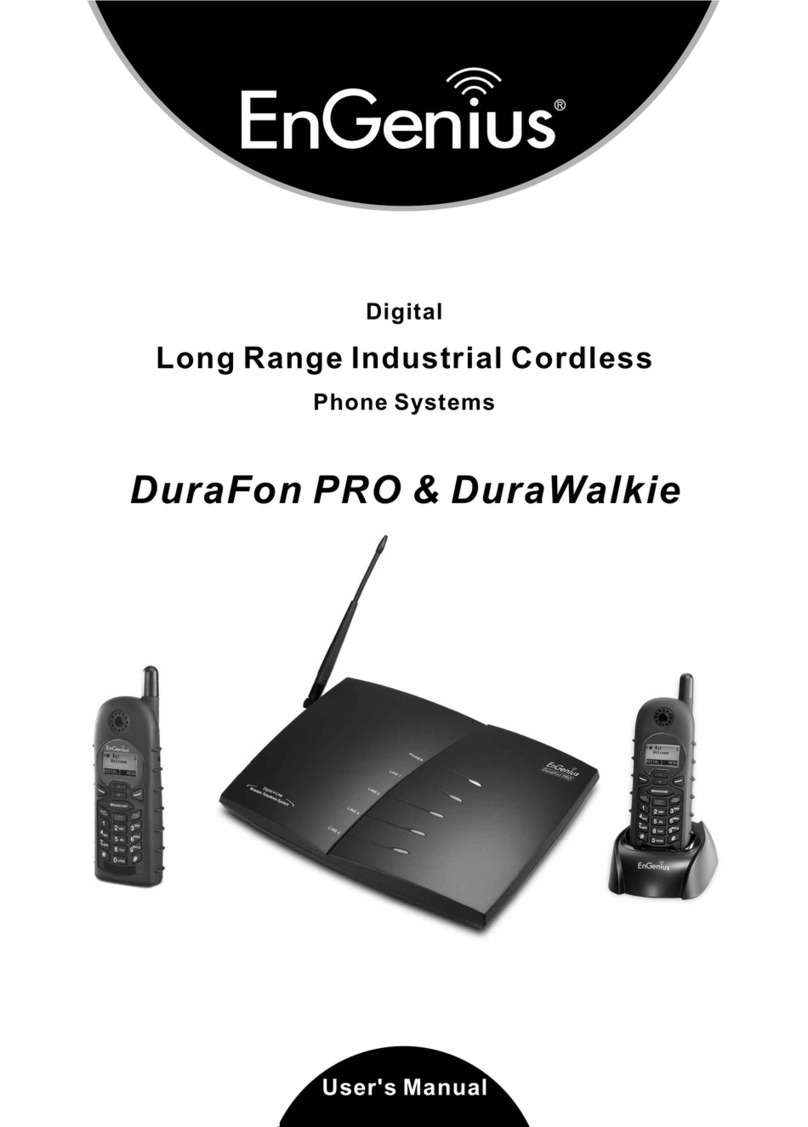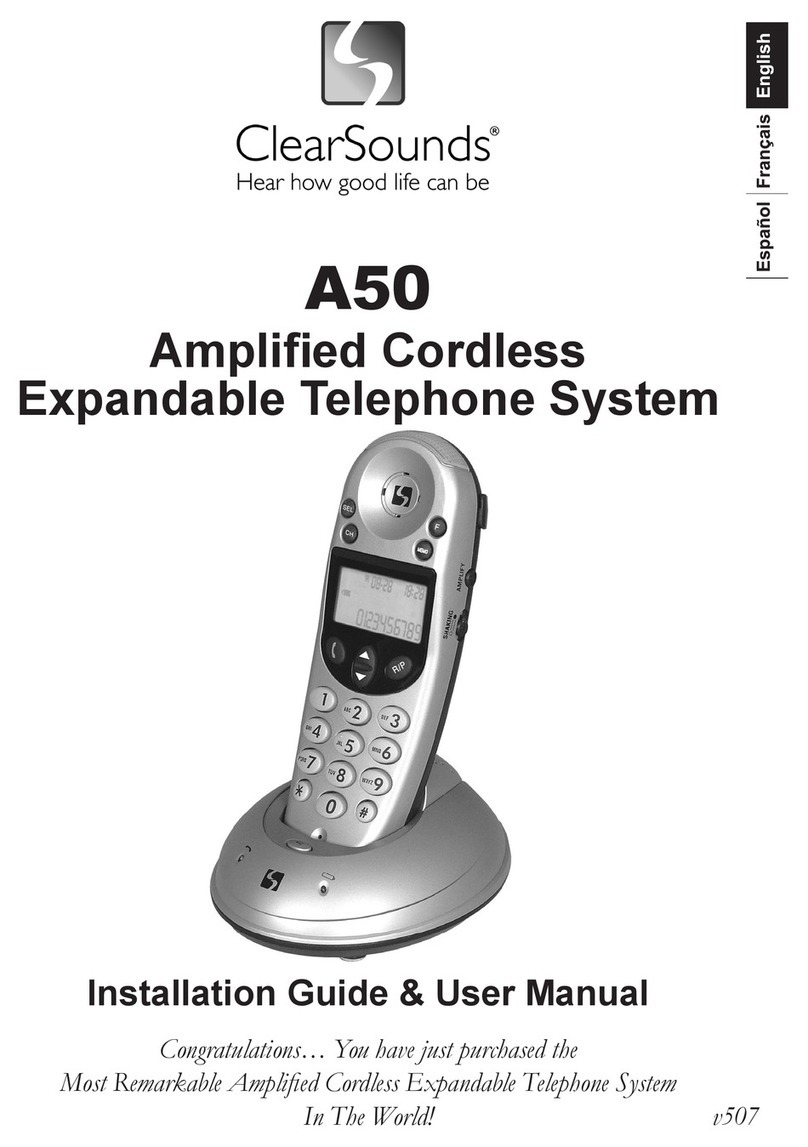NEC DS1000 Operation instructions
Other NEC Telephone System manuals
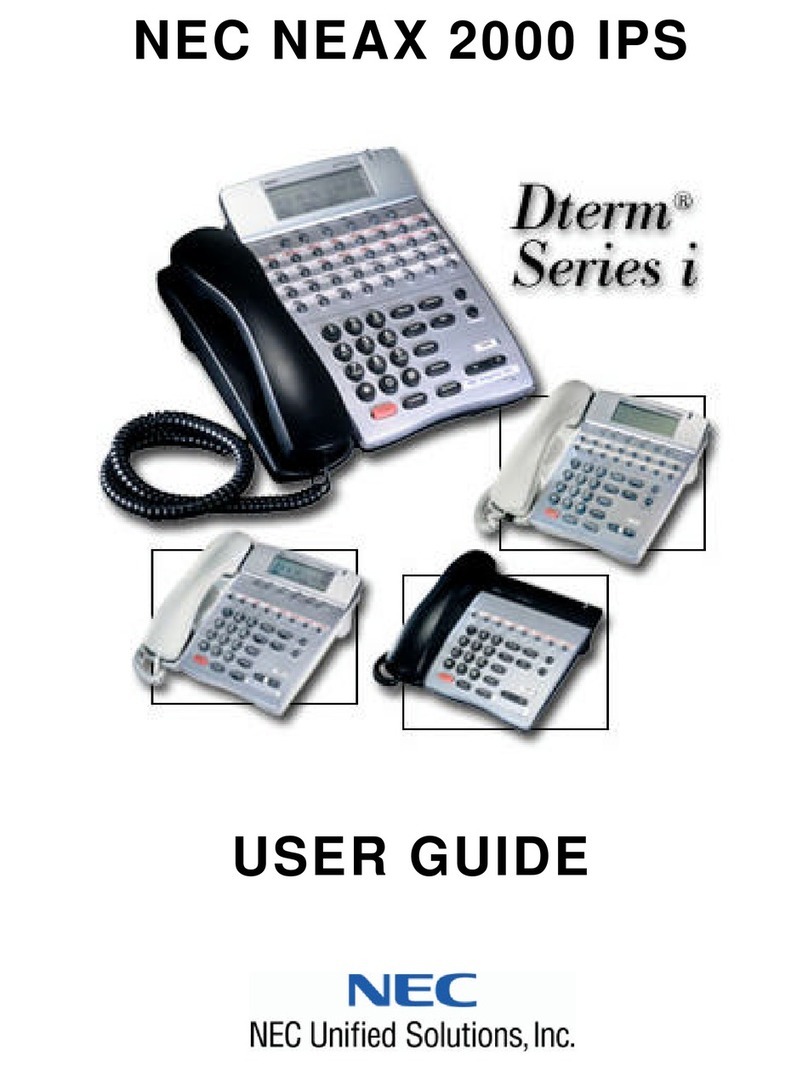
NEC
NEC NEAX 2000 User manual

NEC
NEC Electra Ellte IPK II User manual
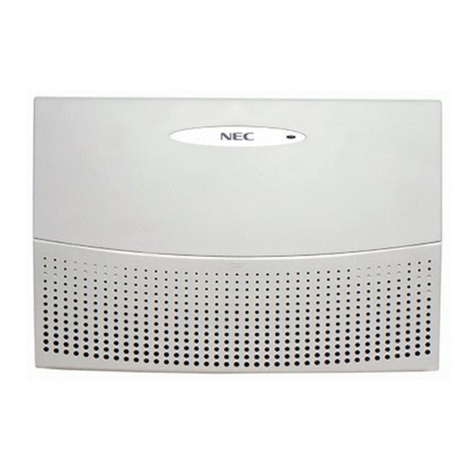
NEC
NEC XN120 Vision User manual
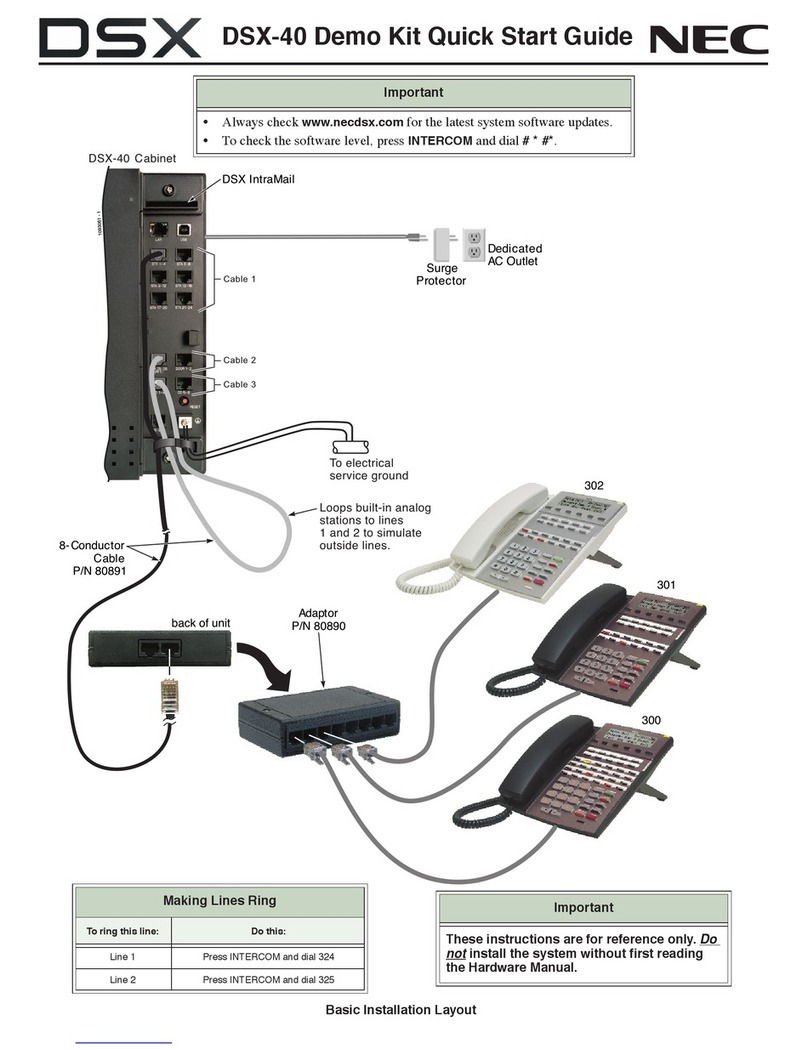
NEC
NEC DSX-40 DEMO KIT User manual
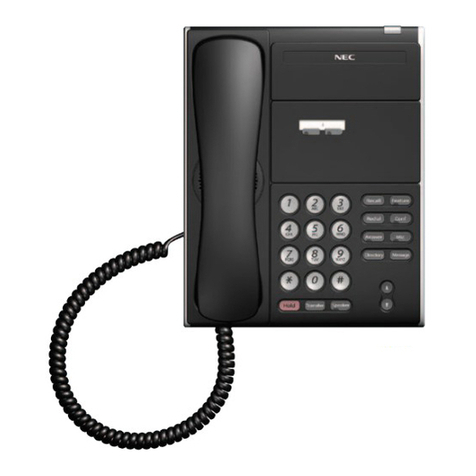
NEC
NEC Univerge SV8100 User manual
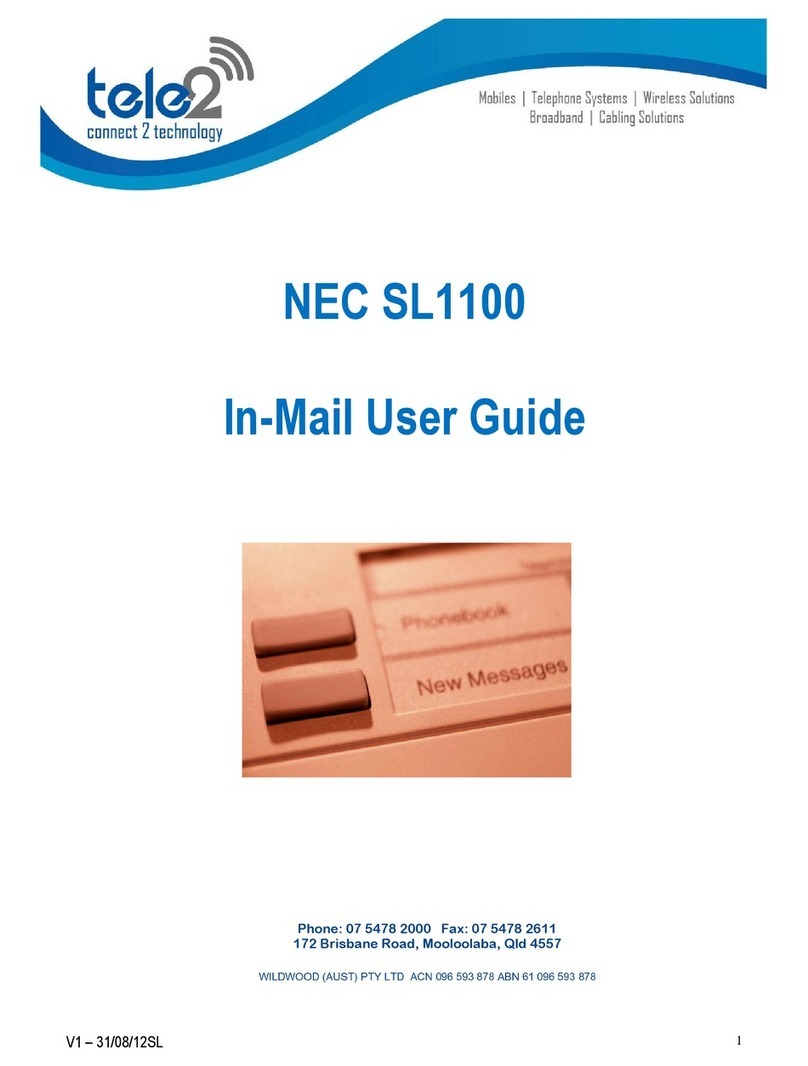
NEC
NEC SL1100 User manual
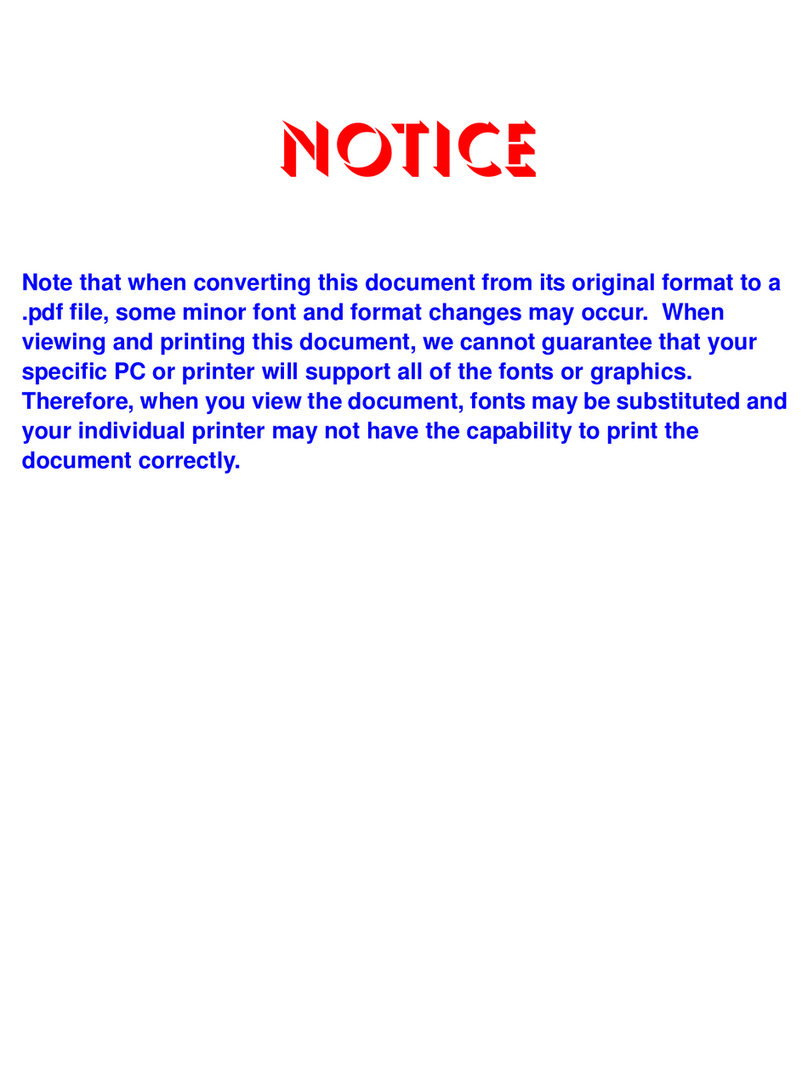
NEC
NEC ELECTRA ELITE IPK II Manual
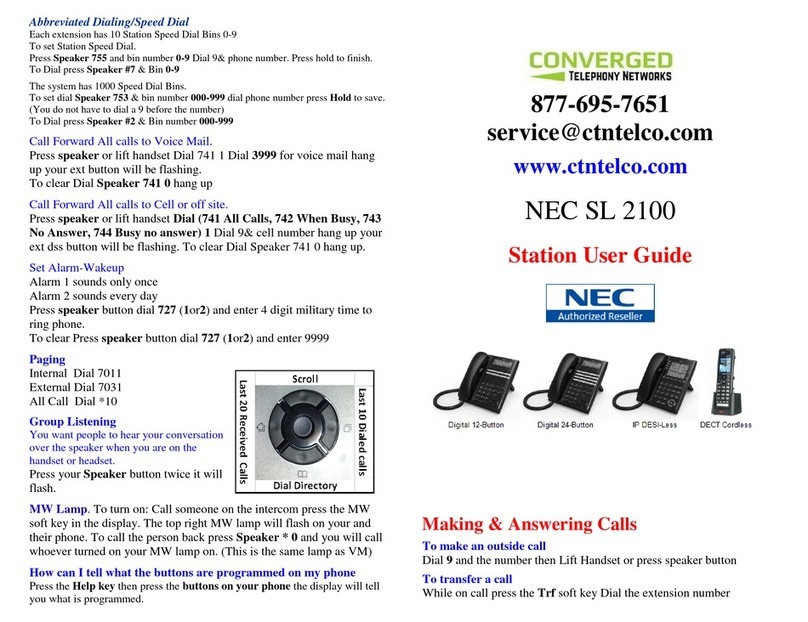
NEC
NEC SL 2100 User manual
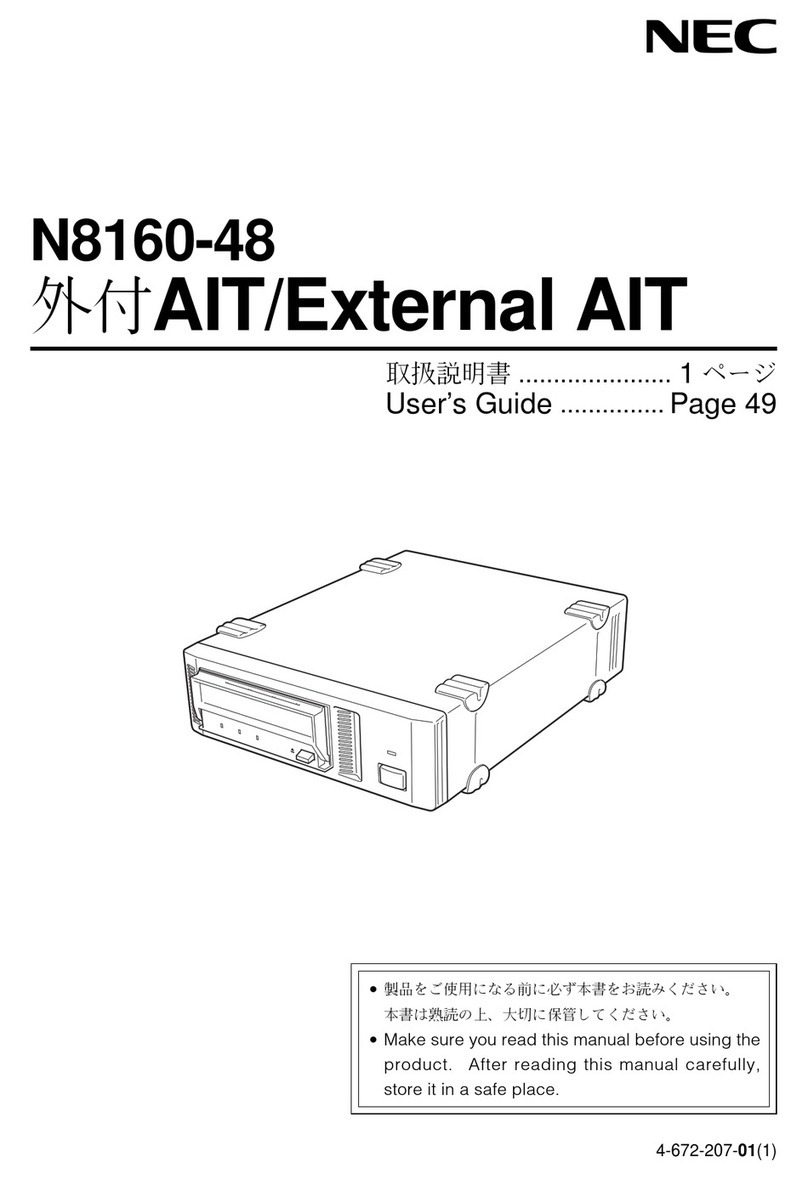
NEC
NEC N8160-48 User manual
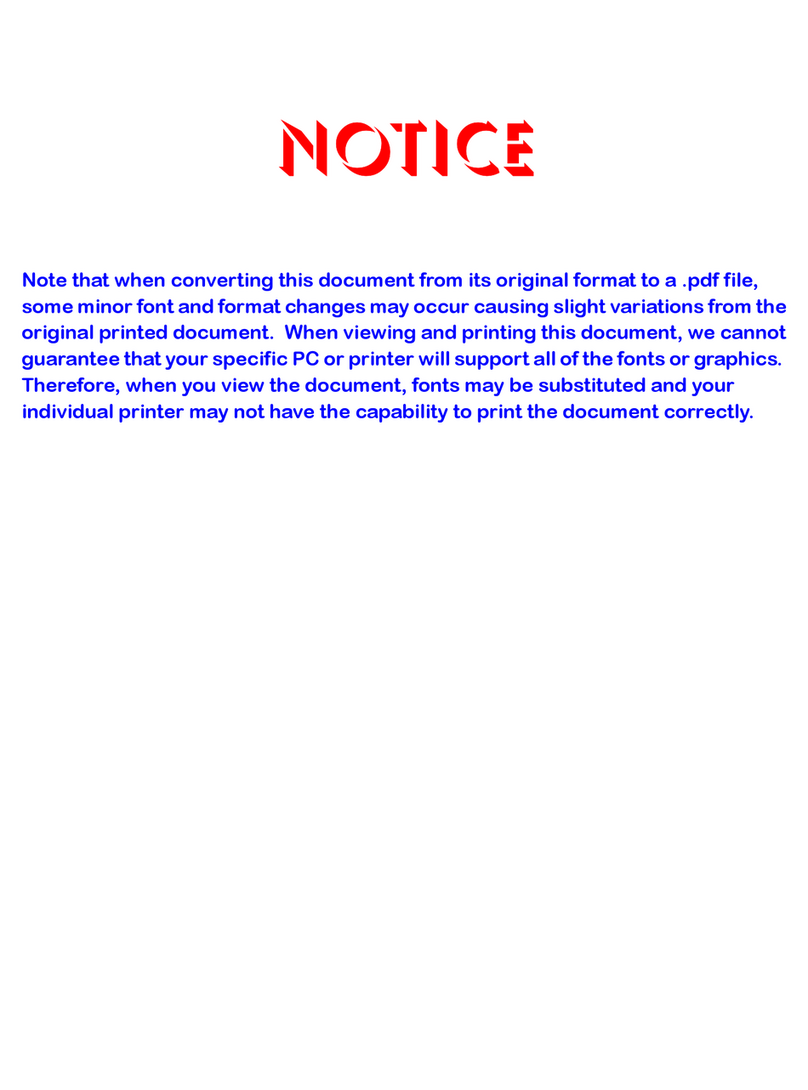
NEC
NEC ElectraElite IPK User manual
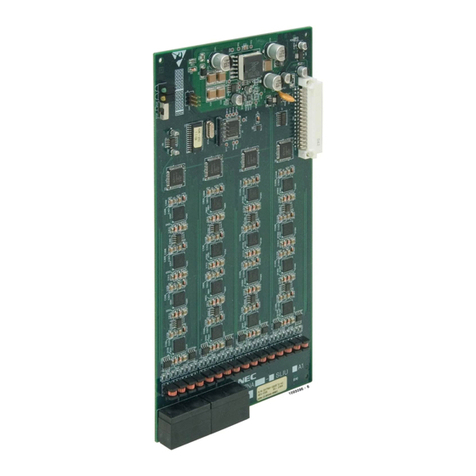
NEC
NEC DSX-160 User manual
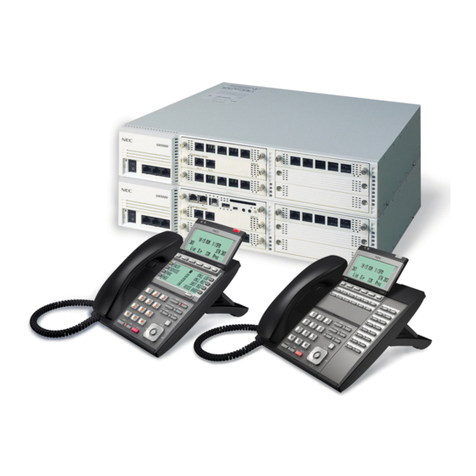
NEC
NEC UX5000 User manual
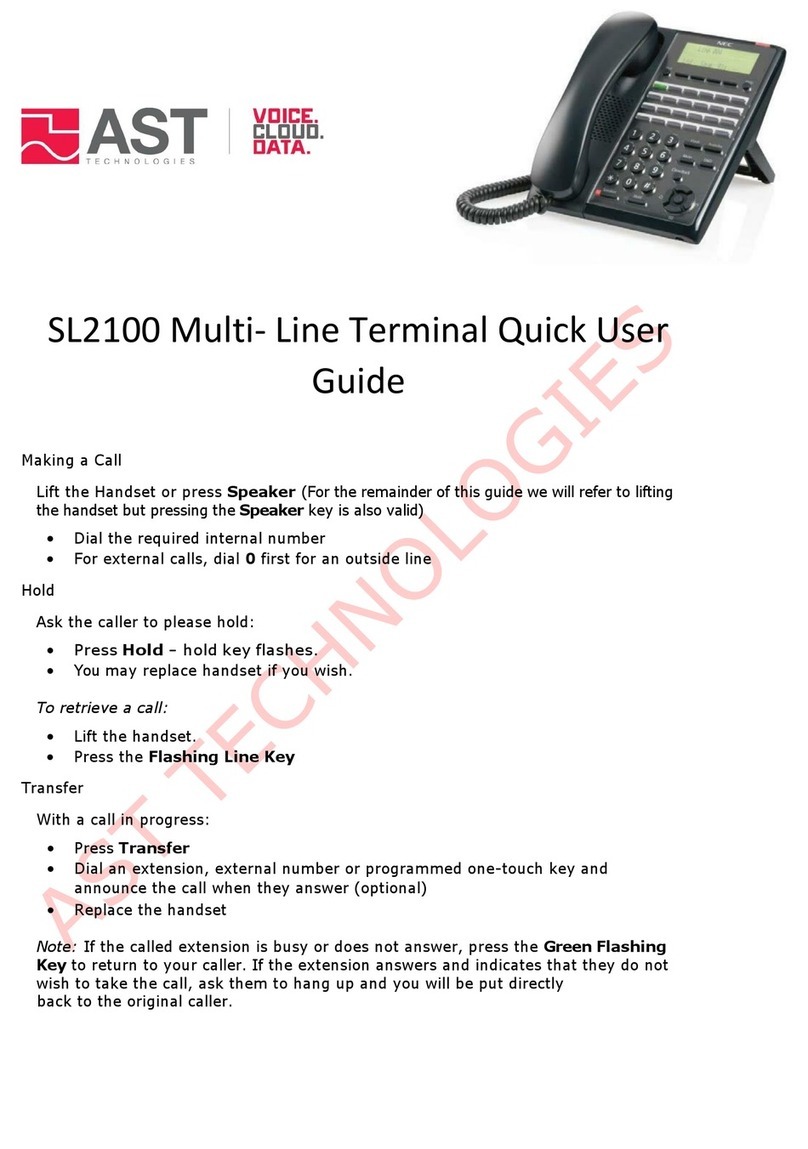
NEC
NEC UNIVERGE SL2100 Instruction manual
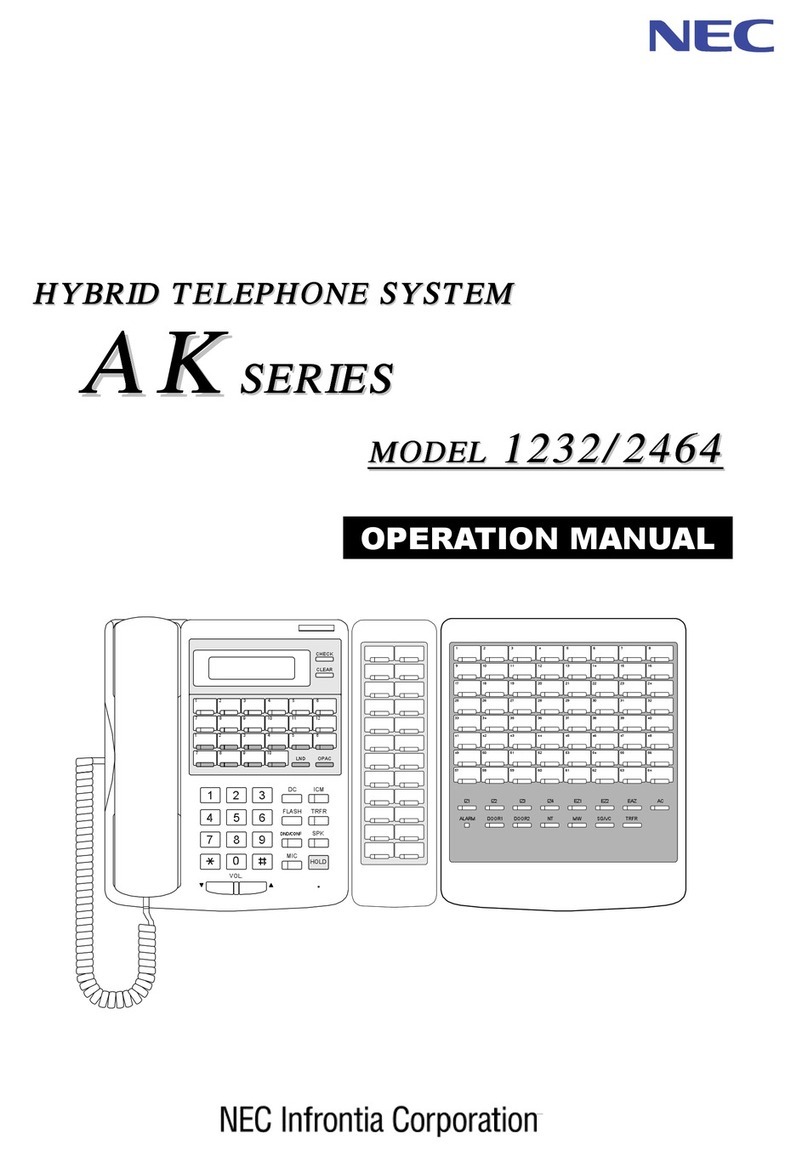
NEC
NEC 1232 AK Series User manual

NEC
NEC Univerge SV8100 User manual
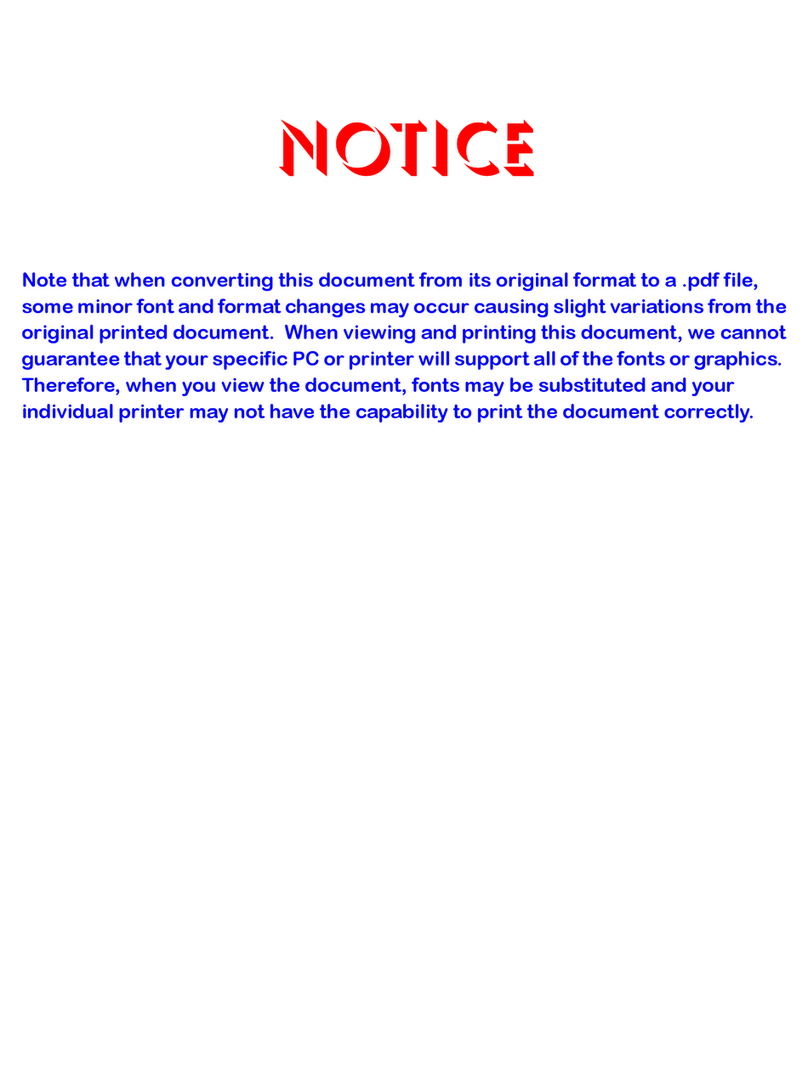
NEC
NEC ElectraElite IPK User manual
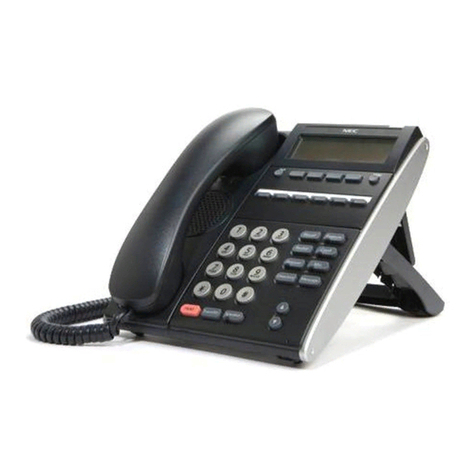
NEC
NEC Univerge SV8100 User manual
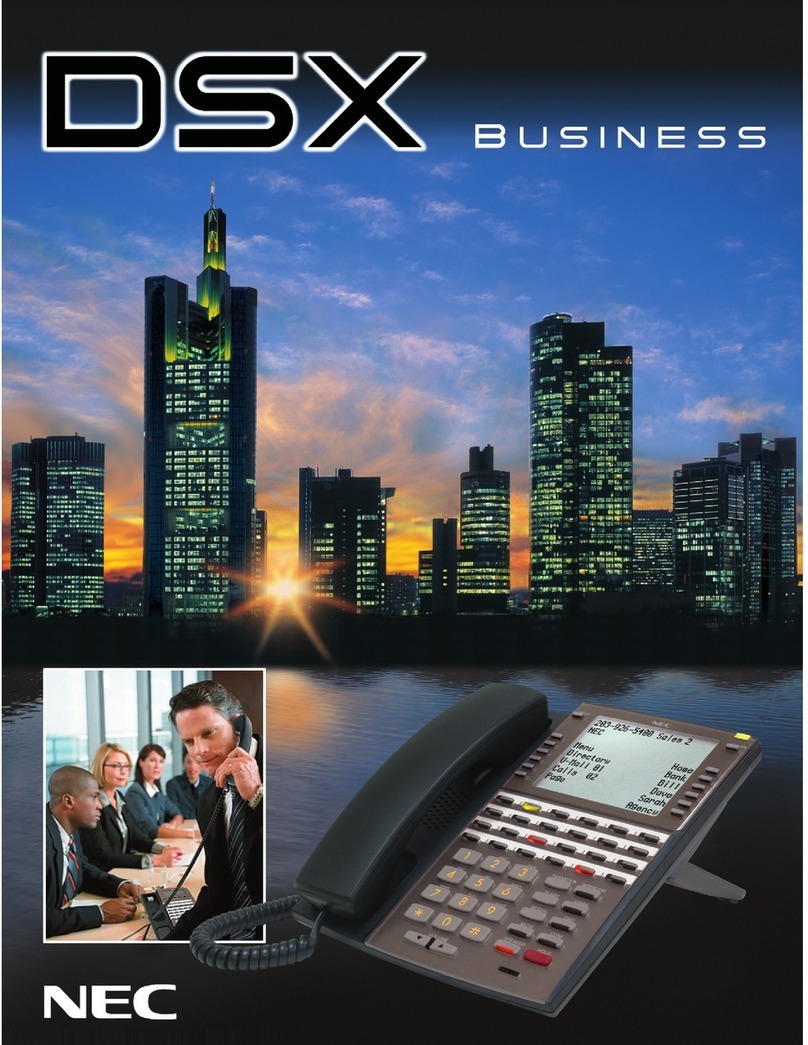
NEC
NEC DSX User manual
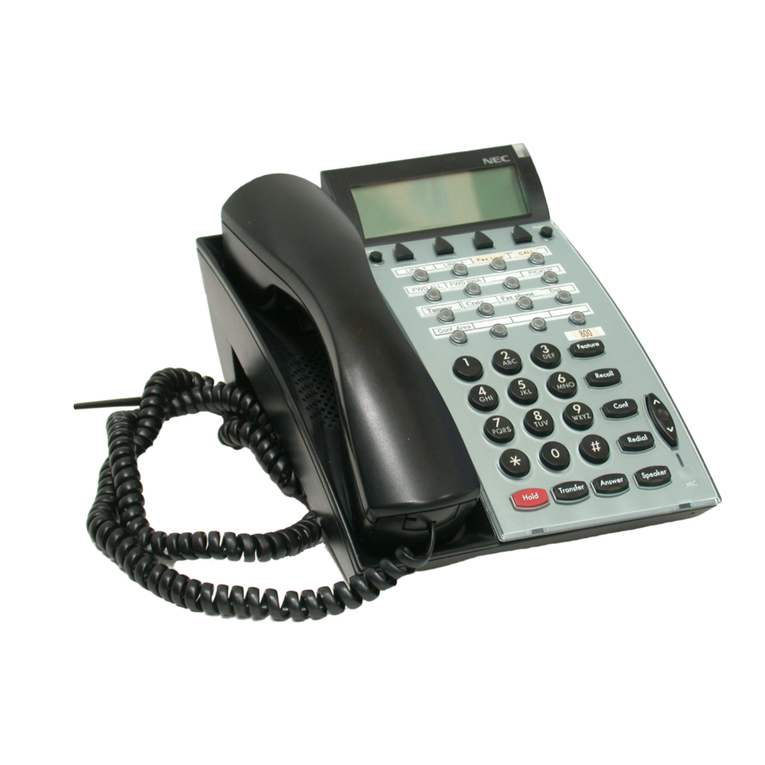
NEC
NEC Xen Master User guide
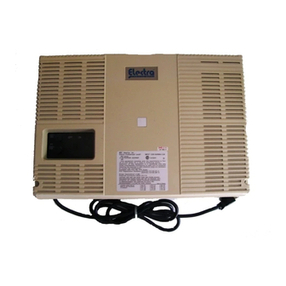
NEC
NEC Electra Professional Supplement
Popular Telephone System manuals by other brands
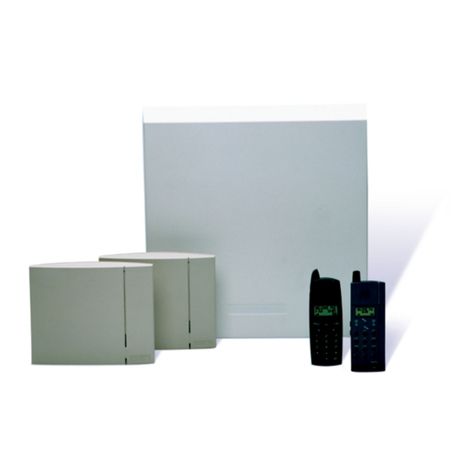
Ericsson
Ericsson DCT1800-S user guide
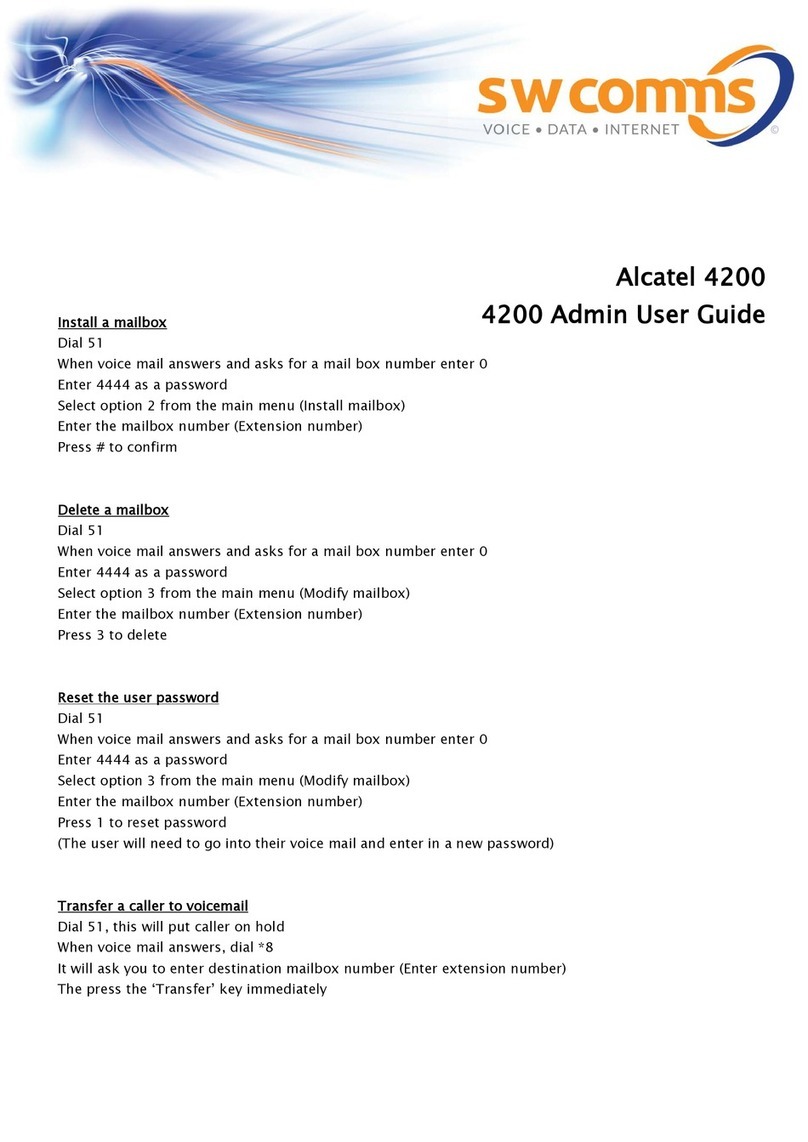
Alcatel
Alcatel EASY REFLEXES 4200 Admin & user guide
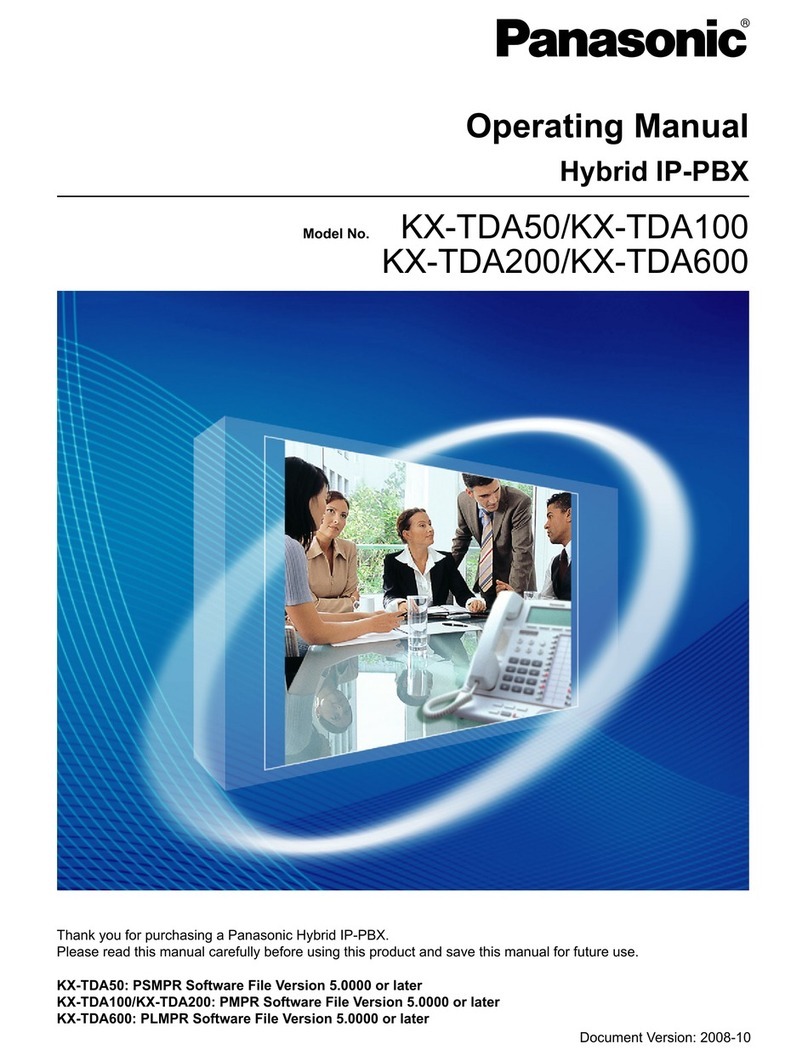
Panasonic
Panasonic KX-TDA50 operating manual
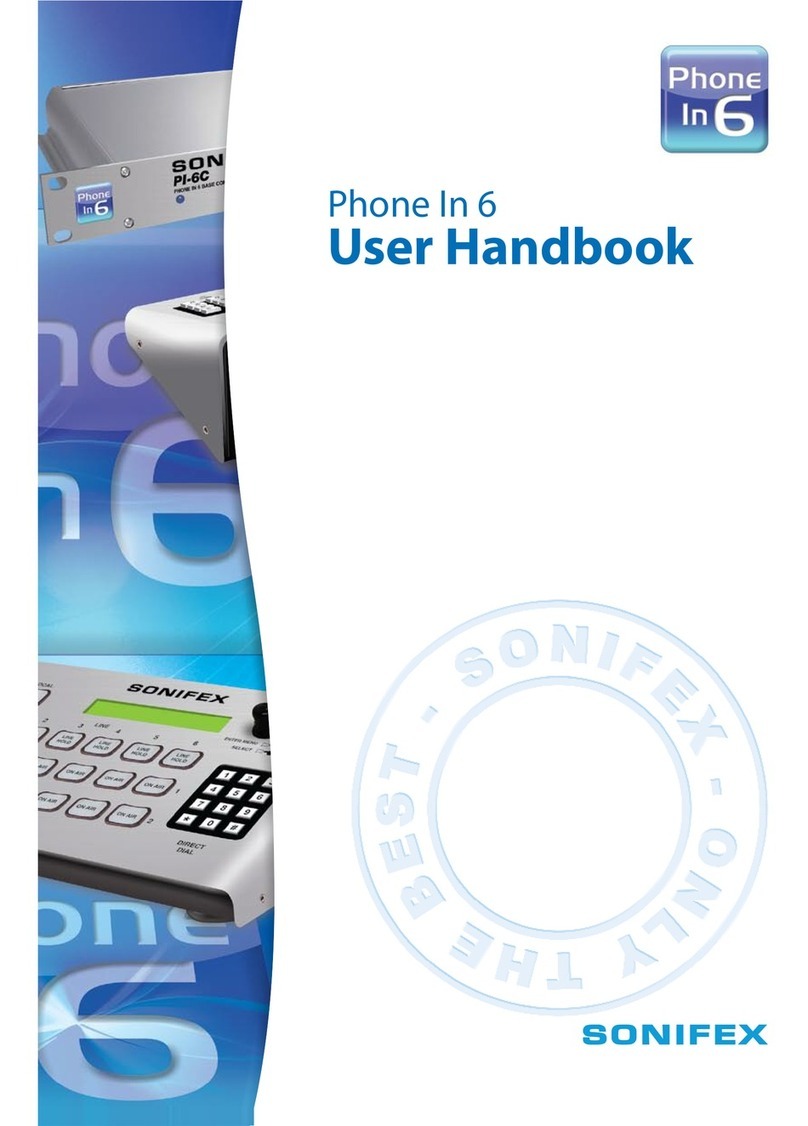
Sonifex
Sonifex Phone In 6 User handbook
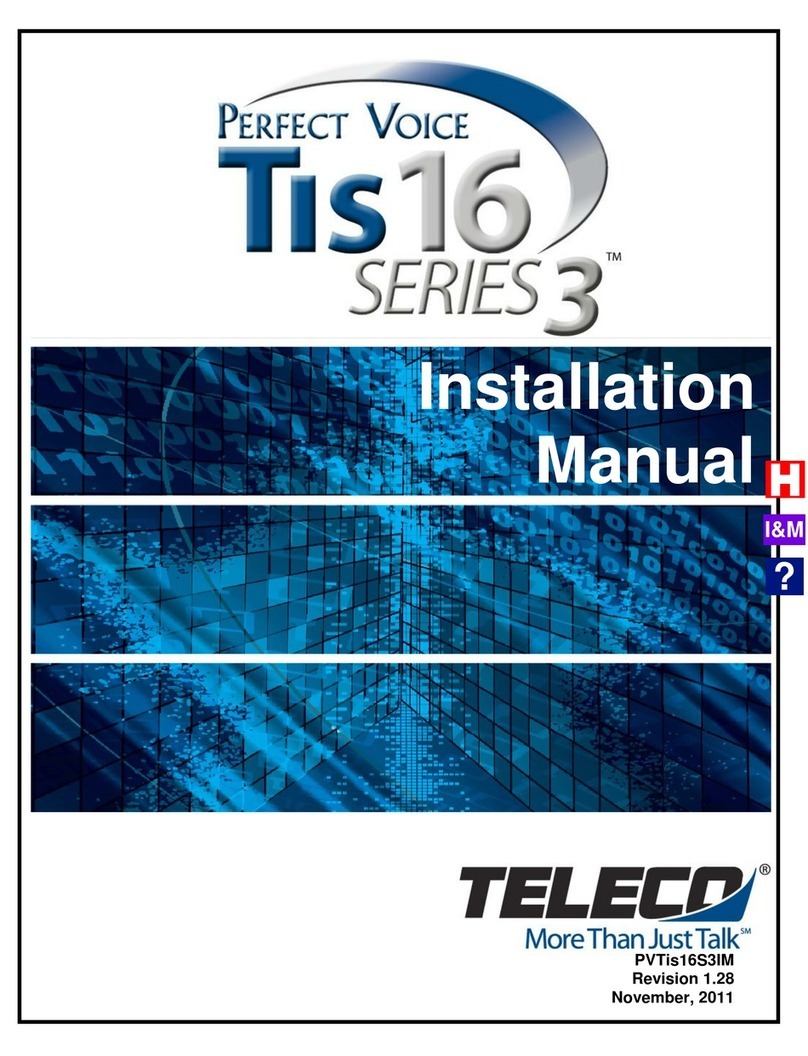
Teleco
Teleco Perfect Voice Tis 16 installation manual
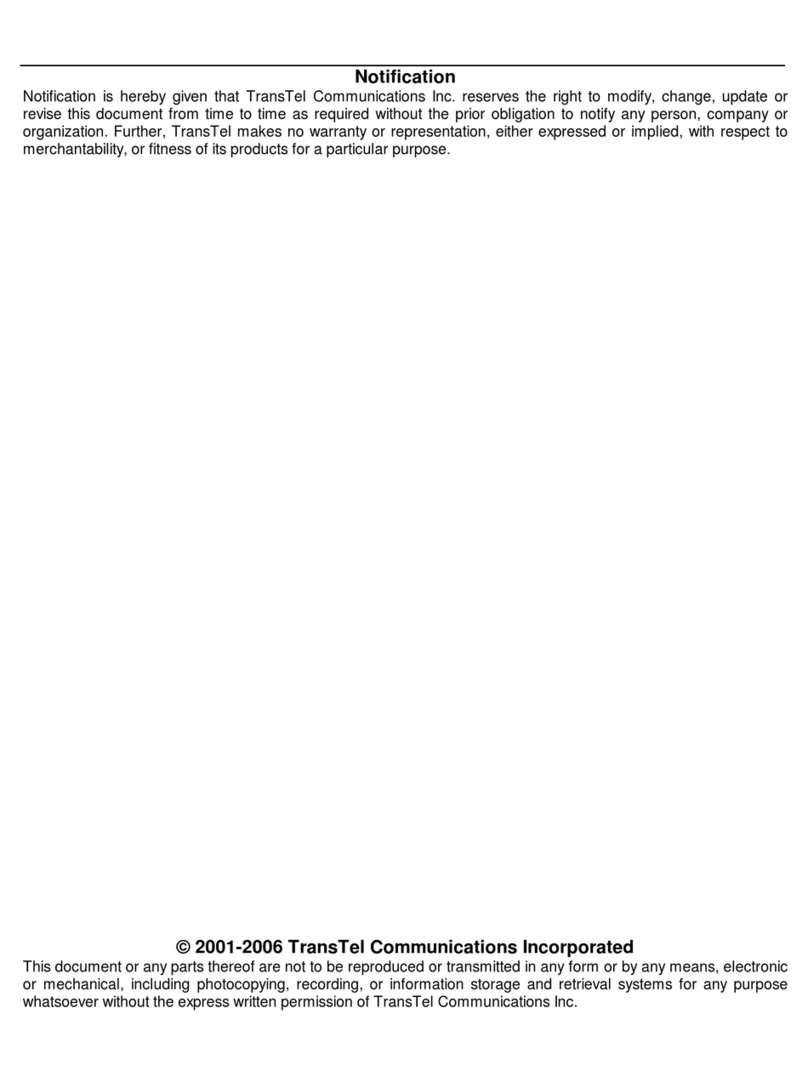
TransTel Communications
TransTel Communications TD-824i Installation and programming manual
